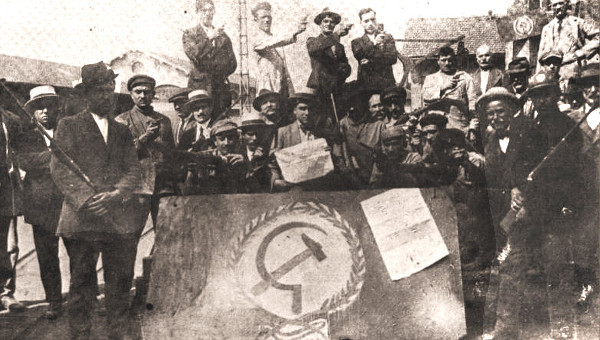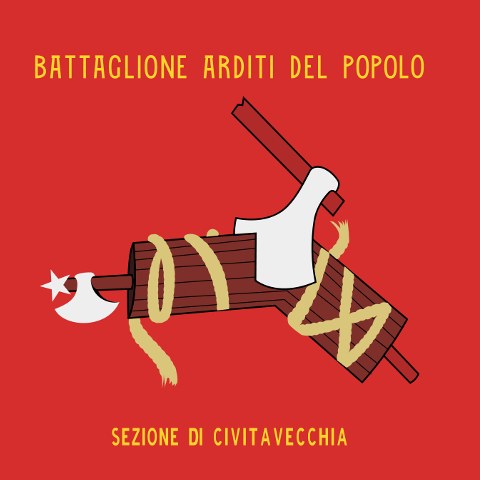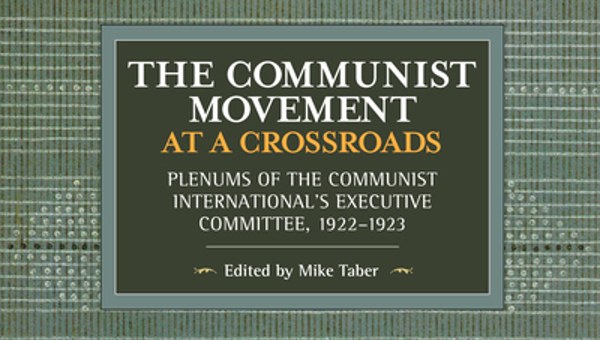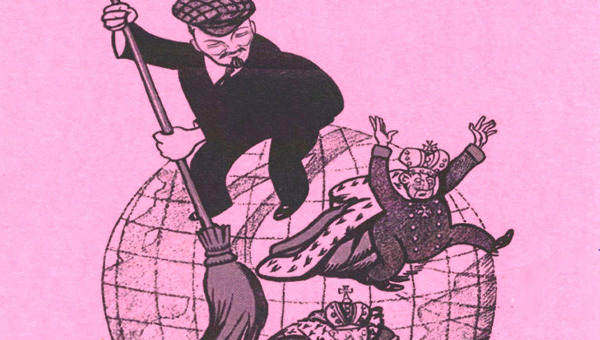How Did Socialists Respond to the Advent of Fascism?
The following talk was given on 21 July 2018 to a two-day seminar at York University entitled “Historical perspectives on united fronts against fascism and the far right.”
The framework for our panel this morning is “Unity against the Right: A historical approach.”
There are in fact many histories of such united resistance, each with its own lineage. We could talk of how Louis Riel united Métis, First Nations, and many colonial settlers to battle for democracy and aboriginal rights. Or of how women debated how to find allies in their liberation struggle and the trade-off with partnerships with the sectors of the elite or of the subaltern masses. But I will not speak of this. I will also set aside the struggle of colonized peoples for unity against imperialism, so central to the socialist movement of the last century.

My topic relates to the origin of Fascism. It was born in Europe as an expression of the ideology of European supremacy, and my focus will thus necessarily be European as well. I’m going to speak of events in Italy a century ago, not simply because of their objective importance but because they carry great weight in our political memory and imagination.
Italy – Between the Wars
Italy then ranked as an imperialist power, although a weak and unstable one, the product of an incomplete bourgeois revolution in which owners of large estates and the Catholic Church held great power, while the majority of Italy’s immense peasantry were landless. A sizable industrial working class was largely socialist in conviction, and the Italian Socialist Party governed more than 2,000 municipalities.
Formally a winner in the First World War (28 July 1914 to 11 November 1918), the Italian ruling class had been weakened by the impact of great human and material destruction in this conflict. The war’s end brought economic crisis, the ruin of middle layers, a mass of discharged soldiers with no visible future, and a militant workers’ upsurge that for a moment seemed about to sweep all before it.
In September 1920 a great wave of factory occupations brought the country to the brink of revolution. However, the Socialists gave no leadership and the movement foundered, opening the gates to counterrevolution.
A wave of reaction was then sweeping across much of Europe. It brought many rightist dictatorial regimes to power, as in Hungary, where the regime executed 5,000 supposed Reds. The Hungarian regime was aristocratic in nature, a military dictatorship based on upper-class cadres. Italy was different: the reactionary movement seemed to emerge from among the masses themselves.
Commandos Right and Left
In Italy, after the war ended, the spearhead of reaction emerged: the Arditi, or “commandos,” a network of anti-labour mercenaries led mainly by former army officers. But the most successful such force, the Fascists, was plebeian. Its leader, Benito Mussolini, had been a left-wing Socialist; the group, founded in 1919, posed as supporters of strikes and workers’ management and of land to the peasants. Yet their ideology was pro-capitalist, rooted in worship of the state and the nation. They acted as murderous anti-labour militia, financed by elements of the ruling class and tolerated or supported by the police and army. The Fascists backed up violence with a forceful ideology rejecting reason and fact while appealing to mysticism and religious-like idolatry of the state and the “man from destiny.”
 By mid-1921 Fascism was a menacing mass movement. How did its opponents respond?
By mid-1921 Fascism was a menacing mass movement. How did its opponents respond?
- The Socialist Party relied on the state to rein in the Fascists. Rejecting organized self-defense, it pressed the regime to take action against lawless Fascist gangs, while rejecting entry into government. At one point it signed a “truce” with the Fascists, which the latter quickly cast aside. (The Socialist refusal to join a bourgeois-dominated government, while consistent with Marxist principle, was out of step with the conduct of most Social Democratic parties in that period, which did often enter such governments.)
- The democratic parliamentary parties did in fact pass laws and regulations aimed against the fascists. For example, guns were to be reregistered and seized if due cause for ownership was not produced. Barricades were to be erected on highways to block Fascist flying squads. However, implementation depended on police and judges mostly sympathetic to the far right. As a result, little was done to enforce such measures.
- The Italian Communist Party, which separated from the Socialists early in 1921, did not perceive the distinction between fascism and the democratic forms of capitalist rule. The Communists were for self-defense against fascists, to be sure, but without alliances and only when attacked. In practice, the Communist Party as an organization largely stood aside from the struggle.
- Meanwhile, a spontaneous rank-and-file self-defense organization the Arditi del Popolo (People’s commandos), sprang up and won wide support. Both the communists and socialists were hostile to the new organization, ordering their members to leave its ranks. Alone, the Arditi del popolo could not win against a fascist host financed and supported by the ruling class and aided by the regular army. Even so, the Arditi led and won pitched battles against the Fascists on several occasions, indicating the road by which a united working class could have got the upper hand.
At the end of 1922, the Fascists consummated their one-sided civil war with a parliamentary deal, in which they were appointed to government by the king and mainstream capitalist parties. During the half-decade that followed, the Fascist regime hardened into a totalitarian dictatorship that lasted until 1943.
Two conclusions jump out from this depressing story:
- First, the Socialists were wrong to believe the bourgeois democratic state could provide effective protection from fascism.
- Second, the Communists were wrong to believe that they could deal with fascism on their own.
During the years of Mussolini’s rise, however, the policy of the Communist International on alliances evolved greatly in a direction that, if applied in Italy, might well have changed the outcome. Five stages in this process should be noted:
- First, in 1920, far-right generals in Germany carried out a coup against the republican government. Social-democratic trade union leaders called a general strike that swept the country, while workers in many areas took up arms and gained effective control. The coup lasted only four days. This outcome proved the power of united workers’ resistance to the far right.
- After the coup collapsed, workers refused to end their strike and demanded effective protection against the far-right conspirators. The social-democratic trade-union leaders then came up with a novel proposal: a workers’ government including all workers’ parties and based on the unions. Although that government did not come to be, the idea behind it gained support and the Communist movement took note.
- The next year, the Communist International (Comintern) adopted the policy that had found expression in resistance to the German putsch, calling on workers’ parties to unite in struggle against the far right and for basic demands they had in common. This policy was known as the “united front.” It was not applied in Italy. Internationally, it met with resistance from Social Democratic leaderships. Why was this policy not applied by the Italian Communists? Their failure to conform indicates that descriptions of the Comintern’s supposedly excessive “centralism” in that period are often exaggerated.
- Another year passed, and the Comintern adopted the workers’ government approach broached during the great German general strike of 1920. Such a government would be sustained by the workers movement, not the state, and could serve as a transitional stage to revolution. A workers’ and peasants’ government of this general type was actually established by the October 1917 Russian revolution.
- Finally, in 1923, the Comintern adopted a strategy for resisting fascism. It was elaborated and presented by Clara Zetkin, drawing on the experience above all of the German workers’ movement. Her plan consisted of four major propositions:
- Workers self-defence against fascist violence: not through individual terror, but through “the power of the revolutionary organized proletarian class struggle.”
- United front action against fascism “involving all working-class organizations and currents regardless of political differences.” By endorsing the Arditi del Popolo, the Comintern indicated willingness to join in anti-fascist struggle with non-working-class forces. They rejected, however, the perspective of a bloc with capitalist parties for government.
- An ideological campaign to reach the best of the young people influenced by fascism who, in Zetkin’s words, “are seeking an escape from deep anguish of the soul. We must show them a solution that does not lead backward but rather forward to communism.”
- Demonstration of “absolute determination to fight to take power out of the hands of the bourgeoisie in order to resolve capitalism’s social crisis,” including by “cementing the alliances necessary to do so.” Zetkin insisted that the perspective of a workers’ and peasants’ government “is virtually a requirement for the struggle to defeat fascism.”
Essence of Fascist Doctrine
There’s something missing here: an analysis of the racist and xenophobic essence of fascist doctrine. It was the reverse side of the fascists’ worship of an aggressive nationalism, which rested on plans for conquest of south Slavs, Greeks, Turks, Africans – all viewed as inferior peoples. In German fascism, such racial stereotyping became more explicit, maturing into a project of genocide against Jews, Poles, Russians, Roma, and other peoples.
 Despite this weakness, Zetkin’s report and resolution, adopted by the Comintern in June 1923, stand as the outstanding exposition of a Marxist response to fascism during its heyday in the 1920s and 1930s. It theorized the lesson of the Italian Arditi del Popolo experience while fusing it with a perspective for workers’ power. Alternatively, the Comintern position can be seen, as Leon Trotsky later insisted, as an application of the Bolsheviks’ united front policies in the run-up to the Russian October revolution of 1917.
Despite this weakness, Zetkin’s report and resolution, adopted by the Comintern in June 1923, stand as the outstanding exposition of a Marxist response to fascism during its heyday in the 1920s and 1930s. It theorized the lesson of the Italian Arditi del Popolo experience while fusing it with a perspective for workers’ power. Alternatively, the Comintern position can be seen, as Leon Trotsky later insisted, as an application of the Bolsheviks’ united front policies in the run-up to the Russian October revolution of 1917.
Given the strategic force of this position, it may seem surprising it was applied during only two brief periods of Comintern history. Comintern anti-fascist policy proved to be unstable, going through no less than six reversals up to the International’s dissolution in 1943. Two of these turnabouts were particularly significant:
- In 1928 the Comintern reverted to the sectarian stance of Italian Communists during Mussolini’s rise, refusing to seek alliances with non-Communist workers’ organizations. The Social Democrats, for their part, refused of united action with the Communists. The absence of workers’ unity in action, opened the door to Hitler’s victory.
- In 1935 the Comintern switched to a policy of unity with Social Democrats while adding two significant innovations: first, unity was now to embrace progressive forces in the imperialist ruling class and, second, the project was now basically parliamentary in nature: to form a progressive coalition encompassing bourgeois forces.
In my opinion, the 1935 policy, known as “popular frontism,” brought the Comintern into broad alignment with Social Democracy as regards the strategic alternative to fascism. The goal of socialist revolution was set aside in favour of a project for defense of democratic capitalism and alliance with forces within the imperialist ruling class.
This occurred at the height of Stalin’s murderous repression of Bolshevik cadres, and this witch-hunt also infected the Comintern and its “people’s front.”
To conclude, the responses of socialists to the first 15 years of fascism fall into three categories: sectarian isolation, an alliance for progressive reform, or a united front to bring working people to power. Despite the immense transformation in social structure and global geopolitics, these divergent impulses continue to find expression today, as we feel our way toward an effective defense against fascist dangers today. •
A Note on Sources
- Some of the material in this text is also discussed in Fumble and late recovery: The Comintern response to Italian fascism.
- Clara Zetkin’s contribution to developing the Marxist position on Fascism is documented in Clara Zetkin, Fighting Fascism: How to Struggle and How to Win, Mike Taber and John Riddell, ed., Chicago: Haymarket Books, 2017. For the introduction to this book, see “Clara Zetkin and the struggle against fascism.”
- Sources for this text include:
- Tom Behan, The Resistible Rise of Benito Mussolini, Bookmarks: London, 2003.
- Jonathan Dunnage, The Italian Police and the Rise of Fascism: A Case Study of the Province of Bologna, 1897-1925, Westport Conn: Praeger, 1997.
- Georgio Galli, Storia del socialism italiano, Milan: Baldini Castoldi Dalai, 2008.
- Daniel Guérin, Fascism and Big Business, New York: Monad, 1973 (1939).
- Rossi (Angelo Tasca), The Rise of Italian Fascism 1918-1922, New York: Howard Fertig, 1966 (1938).
- Paolo Spriano, Storia del Partito comunista italiano, Turin: Einaudi, 1967.





